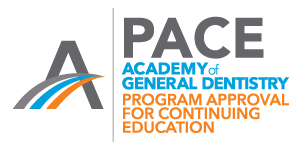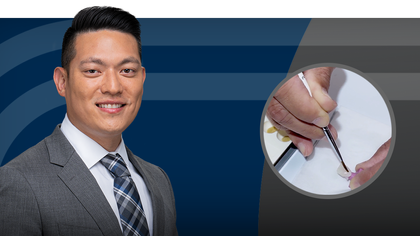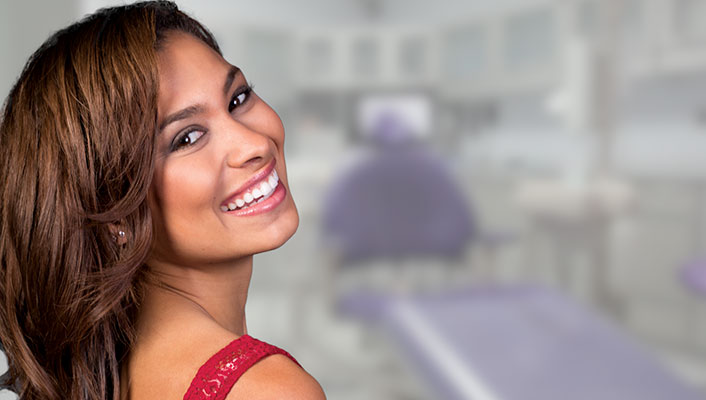- How to present lab-fabricated temporaries to patients
- Temporary crown esthetics
- Reinforcement options for premade custom temporaries
- The benefits of lab-fabricated provisionals
- The importance of esthetic temporaries
The Many Advantages of a Premade Custom Temporary
Course Objectives
1 CE Credit
Premade custom temporaries offer clinicians a number of advantages over temporaries fabricated chairside. In this presentation, Dr. Steven Barrett explains the benefits of lab-fabricated temporaries, including improved marginal accuracy, strength, longevity and color stability. Topics include:
Summary
The placement of laboratory-fabricated provisional restorations offers clinicians and patients numerous advantages, both restorative and cosmetic. Clinicians can achieve a higher degree of clinical success when it comes to marginal accuracy, strength, longevity and color stability compared to conventionally fabricated temporaries. Premade custom temporaries can serve as an integral part of any dentist’s restorative protocol, and their incorporation as a transitional tool within the office will lead to more predictable results.
CAUTION: When viewing the techniques, procedures, theories and materials presented, you must make your own decisions about specific treatment for patients and exercise professional judgment regarding the need for further clinical testing or education and your own clinical expertise before trying to implement new procedures.
Recognition & Approval

Glidewell Education Center
Nationally Approved PACE Provider for FAGD/MAGD credit
Approval does not imply acceptance by any regulatory authority, or AGD endorsement. 3/1/2024 to 2/29/2028.
Provider ID# 216789
References
- Rayyan MM, Aboushelib M, Sayed NM, Ibrahim A, Jimbo R. Comparison of interim restorations fabricated by CAD/CAM with those fabricated manually. J Prosthet Dent. 2015 Sep;114(3):414-9.
- Yao J, Li J, Wang Y, Huang H. Comparison of the flexural strength and marginal accuracy of traditional and CAD/CAM interim materials before and after thermal cycling. J Prosthet Dent. 2014 Sep;112(3):649-57.
- Abdullah AO, Tsitrou EA, Pollington S. Comparative in vitro evaluation of CAD/CAM vs conventional provisional crowns. J Appl Oral Sci. 2016 May-Jun;24(3):258-63.
- Gujjari AK, Bhatnagar VM, Basavaraju RM. Color stability and flexural strength of poly (methyl methacrylate) and bis-acrylic composite based provisional crown and bridge auto-polymerizing resins exposed to beverages and food dye: an in vitro study. Indian J Dent Res. 2013 Mar-Apr;24(2):172-7.
- Jianming Y, Ying T, Feng P, Weixing X. [Comparative evaluation of the marginal accuracy of single crowns fabricated computer using aided design/computer aided manufacturing methods, self-curing resin and Luxatemp]. Hua Xi Kou Qiang Yi Xue Za Zhi. 2016 Dec 1;34(6):575-8.
-
 Online CE CourseNext-Level Chairside Esthetics: Customizing Restorations with Stain, Glaze, and Finishing TechniquesIn this course, Dr. Justin Chi demonstrates how to elevate chairside restorations using advanced staining, glazing, and finishing techniques for monolithic restorations.
Online CE CourseNext-Level Chairside Esthetics: Customizing Restorations with Stain, Glaze, and Finishing TechniquesIn this course, Dr. Justin Chi demonstrates how to elevate chairside restorations using advanced staining, glazing, and finishing techniques for monolithic restorations. -
 Online CE CourseEsthetic Veneer Preparations: From No Prep to Full PrepIn this course, Dr. Danielle Brown provides a practical overview of veneer preparation techniques from no-prep, minimal-prep and traditional-prep veneers with step-by-step protocols.
Online CE CourseEsthetic Veneer Preparations: From No Prep to Full PrepIn this course, Dr. Danielle Brown provides a practical overview of veneer preparation techniques from no-prep, minimal-prep and traditional-prep veneers with step-by-step protocols. -
 Online CE CourseBonding and Temporizing Protocols: Tips for VeneersIn this course Dr. Danielle Brown offers practical guidance on veneer temporization and bonding techniques to improve patient comfort and clinical outcomes.
Online CE CourseBonding and Temporizing Protocols: Tips for VeneersIn this course Dr. Danielle Brown offers practical guidance on veneer temporization and bonding techniques to improve patient comfort and clinical outcomes.




